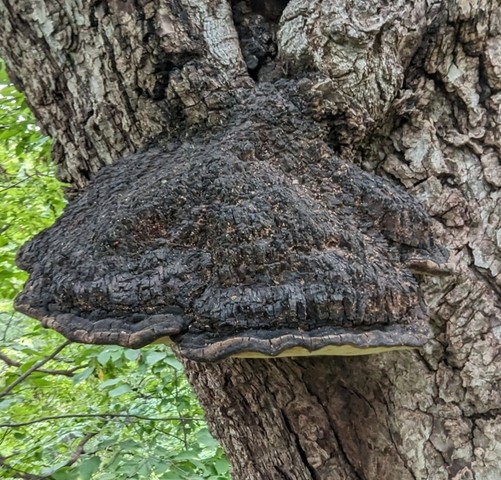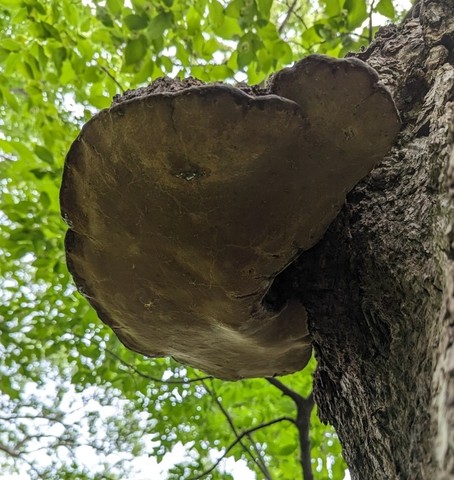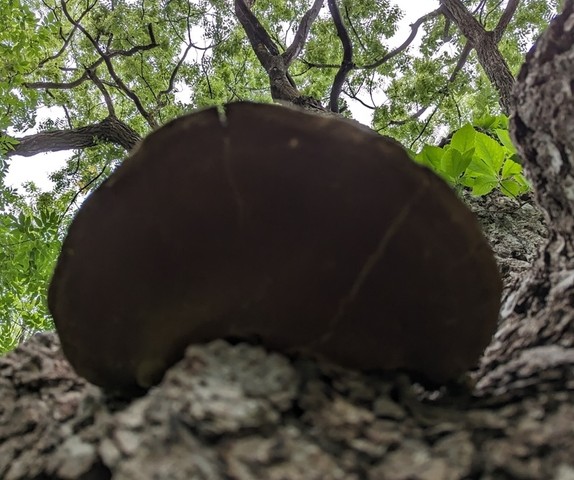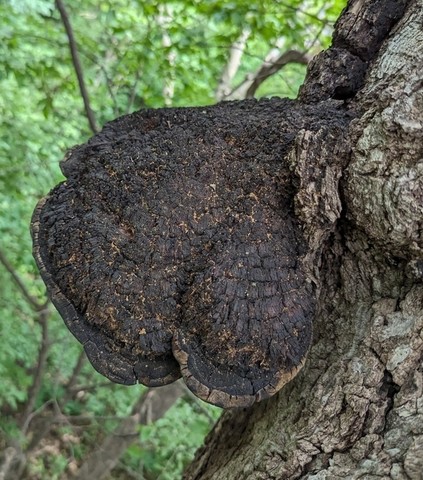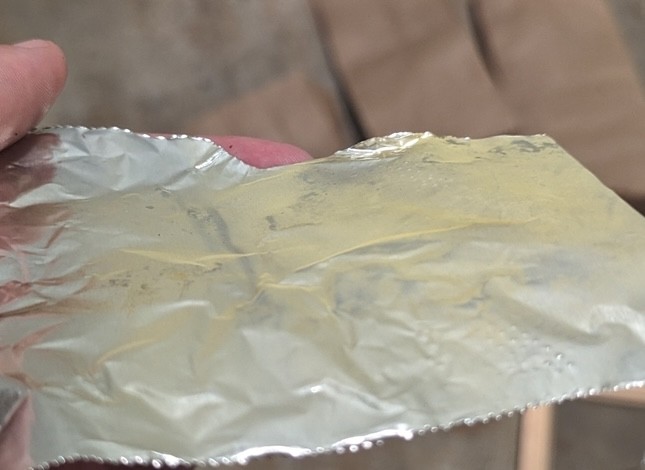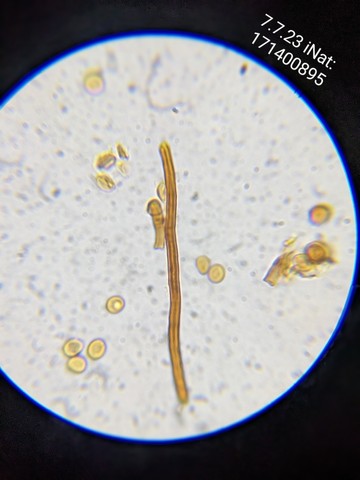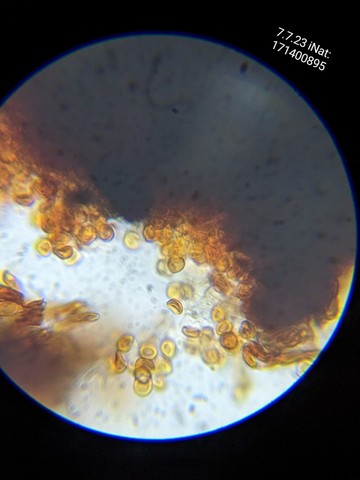Sanghuangporus weirianus
Life > Fungi > Basidiomycota > Agaricomycotina > Agaricomycetes > Hymenochaetales > Hymenochaetaceae > Sanghuangporus
Description
Sanghuangporus weirianus is a parasite and decomposer of Black Walnut (Juglans nigra) and can be found year-round. The top of the cap is black with fissures that look similar to the way bark splits on a tree. This conk is hard, perennial, and exclusively favors Walnut (Juglans). The top of the cap is black, and the bottom pore surface is cream to orange-brown with tiny pores with an iridescent shine. It has a pale-yellow spore print.
Also known as Phellinus weirianus.
Compare to Fulvifomes robiniae which grows on Black Locust (Robinia pseudoacacia).
Observations
July 5th, 2023 Indian Cave State Park
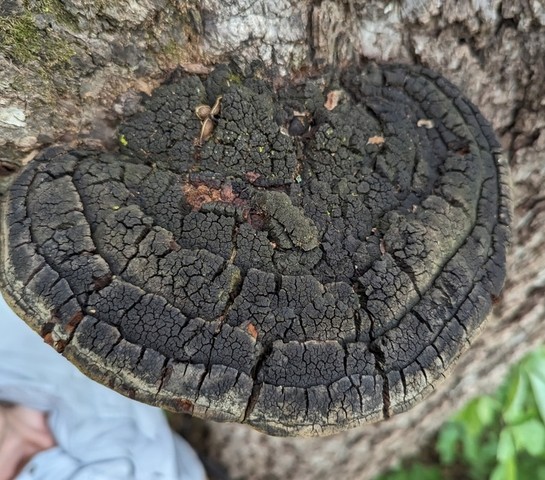
#145
Two separate specimens growing about 12 ft up on large Black Walnut tree on north-facing oak woodland slope near woodland edge.
Hymenium iridescent. Orange-brown. Pores small. Bruises dark brown.
Smell: Strong earthy and sweet. Taste: Faintly bitter.
Spore print: pale yellow.
KOH: Instantly black on all surfaces. Ammonia: Instantly reddish brown on fresh hymenium and black on other surfaces.
Microscopy: Spores and hyphal tissues dextrinoid in KOH. Spores appear to be somewhat red blood cell-shaped, some more sickled then others (see 3rd microscopy photo).
TACGTATTGCTATAATATTCGGCACTTGGTCATTTAGAGGAAGTAAAAGTCGTAACAAGGTTTCCGTAGGTGAACCTGCGGAAGGATCATTATCGAGTTTTGAAAGCGCGCGAGACTTGACTTGCTGCTGGCGCGAAATCGCGCATCGTGCACGGTTCCTCGCGCTCAAATCCAACTCAAACCCCTGTGCACCTTATATATATCGCGAGTCGAAGTTAGTAGTCTGAGGTCTTGCAAGTAAATCAGTAGAAAGACGGCGAAAGGGGGGCGAGTCTTTACCGCTCGTCAGGTAGCCTGCCTTTCGAAAATGAAAGCGAGAGCGTCGTCGGGTGAAGACTTCGGCTTGTTGTTACAAACACCTTATGTTGTCTTTGTGAATGTAATGCTCCTCGTGGGCGGAAAATAAATACAACTTTCAACAACGGATCTCTTGGCTCTCGCATCGATGAAGAACGCAGCGAAATGCGATAAGTAATGTGAATTGCAGAATTCAGTGAATCATCGAATCTTTGAACGCACCTTGCGCCCCTTGGTATTCCGAGGGGCATGCCTGTTTGAGTGTCATGTTTATCTCAAACCGCTCGTCTTTCTTTAATTGTGAAGGGCTTGAGGTTTGGACTTGGAGGTTTACTGCTGGCGGCCGCCTTTCGAGGTGGGTGTCGGCTCCTCTCAAATACATTAGCTGAGCTTCGGCTCGCGTTTACGGTGTAATAGTTGACTCCATTCGCCAACGAGCGCCTGCCTAACGAGCTTGCTTCTAGTCGTCCGCGTCGTCGGACAAAGGAGTGTTAACTTAACCCTCCTTCTTGTTGACACCTTTGACCTCAAATCAGGTAGGATTACCCGCTGAACTTAAGCATATCAATAAGCGGAGGATTCGATTATCTCCAGCAATACGTAView MycoMap DNA Results
References
Kuo, M. (2010, February). Phellinus robiniae. Retrieved from the MushroomExpert.Com Web site: http://www.mushroomexpert.com/phellinus_robiniae.html
Zhou, LW., Vlasák, J., Decock, C. et al. Global diversity and taxonomy of the Inonotus linteus complex (Hymenochaetales, Basidiomycota): Sanghuangporus gen. nov., Tropicoporus excentrodendri and T. guanacastensis gen. et spp. nov., and 17 new combinations. Fungal Diversity 77, 335–347 (2016). https://doi.org/10.1007/s13225-015-0335-8
Created December 15, 2025 at 10:41 AM
